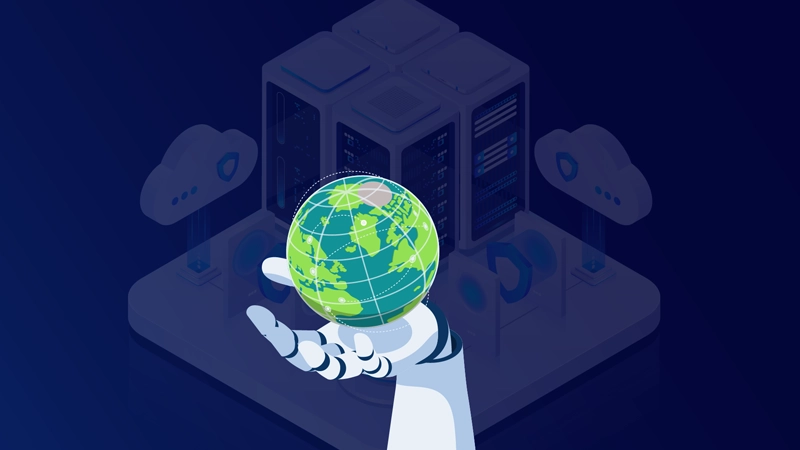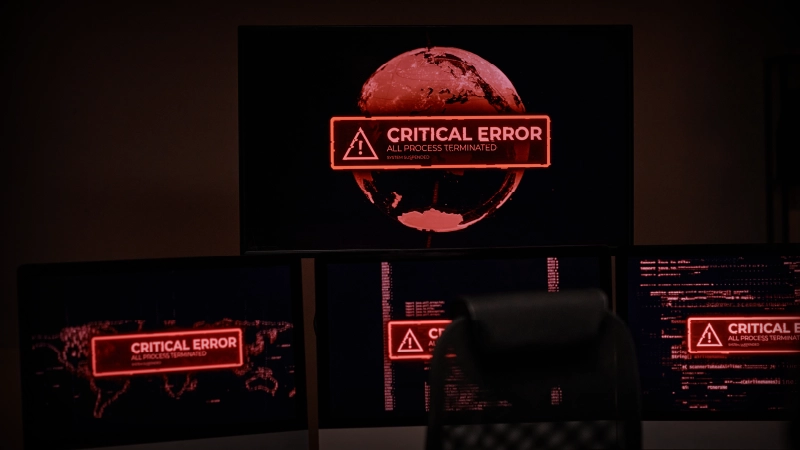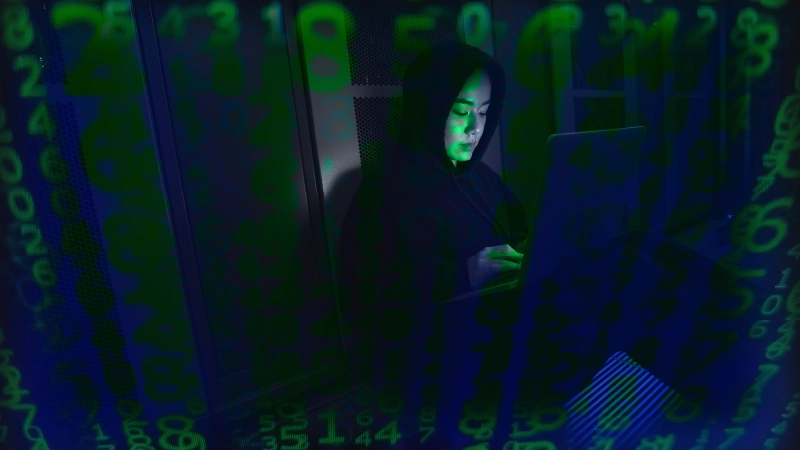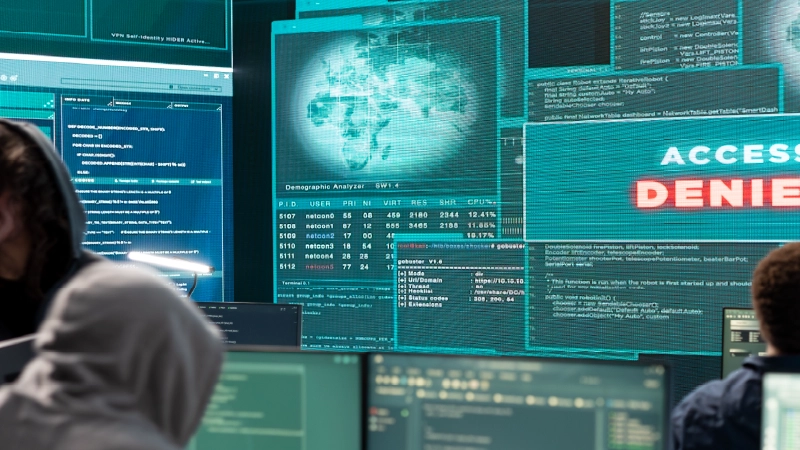Top Cybersecurity Predictions for 2025

Staying Ahead in a Rapidly Evolving Threat Landscape
As we approach 2025, the cybersecurity landscape continues to evolve at a breakneck pace. New technologies and methodologies are reshaping the digital environment, while cybercriminals are leveraging increasingly sophisticated tools and tactics. With that in mind, here are the top cybersecurity predictions for 2025, shedding light on what organizations and individuals should expect and prepare for.
AI-Powered Cyber Attacks Will Increase
Artificial intelligence (AI) is transforming cybersecurity, but it’s also giving cybercriminals a powerful new weapon. In 2025, we expect a significant uptick in AI-driven cyberattacks, particularly through automated tools that can exploit vulnerabilities in real time. AI will enhance phishing attacks, allowing for highly personalized and convincing lures, and attackers may even create autonomous malware that evolves without human input, making detection and mitigation far more challenging.
Key Takeaway: Organizations will need to adopt AI-based defense strategies capable of learning and adapting at the same rate as AI-driven threats.
Quantum Computing Will Challenge Traditional Encryption
Quantum computing is poised to revolutionize several industries, but its biggest potential disruption lies in cybersecurity. A real-time threat for organizations is a need to defend against “harvest now, decrypt later” attacks. A “Harvest Now, Decrypt Later” attack involves cybercriminals intercepting encrypted data today, intending to decrypt it in the future when more powerful technologies, such as quantum computing, become available. While current encryption standards are strong, future advancements could render them vulnerable to decryption. This poses a long-term risk, particularly for sensitive data with extended value, such as financial or medical information.
Key Takeaway: To mitigate this threat, organizations should consider adopting quantum-safe encryption methods to ensure data remains secure even against future decryption capabilities. Enterprise organizations need to employ automated data discovery and protection using various forms of quantum resistant encryption, across platforms, on data that is static or in motion to truly secure their data.
Increased Focus on Zero Trust Architecture
The shift to remote and hybrid work has blurred the lines of traditional network perimeters, making the “trust but verify” model of cybersecurity obsolete. In 2025, the Zero Trust architecture—where every user, device, or service, regardless of location, is treated as a potential threat—will become the standard for securing enterprise networks. Organizations will increasingly invest in robust identity and access management (IAM) solutions, multi-factor authentication (MFA), and continuous monitoring to ensure that trust is never implicit.
Key Takeaway: The move toward Zero Trust will accelerate, and organizations will prioritize identity management, contextual access, and real-time monitoring.
Cloud Security Becomes a Major Battleground
Cloud computing adoption continues to surge, and with it, so do the risks. In 2025, cloud environments will be prime targets for cyberattacks, as businesses increasingly move critical infrastructure and sensitive data to the cloud. Misconfigurations, insufficient monitoring, and poor identity management will remain some of the leading causes of cloud breaches. As a result, security posture management on cloud tools, workload protection platforms, and encryption will see widespread adoption.
Key Takeaway: Strengthening cloud security will be critical for organizations, with a focus on continuous monitoring, misconfiguration detection, and encryption of data both at rest and in transit.
Ransomware Will Target Critical Infrastructure
Ransomware attacks have become increasingly dangerous and costly, and by 2025, critical infrastructure such as energy grids, healthcare systems, and transportation networks will be among the primary targets. Cybercriminals will exploit vulnerabilities in aging systems and the IoT devices that underpin much of this infrastructure. These attacks will not only lead to financial loss but may also threaten national security, prompting governments and private entities to collaborate more closely on cybersecurity initiatives.
Key Takeaway: Governments will introduce stricter regulations, and critical infrastructure organizations will need to ramp up their defenses by investing in advanced threat detection, incident response, and real-time monitoring systems.
Cybersecurity Skills Gap Will Widen
The shortage of cybersecurity professionals has been a longstanding issue, and by 2025, the gap is expected to widen even further. As cyber threats become more complex, organizations will struggle to find skilled professionals who can handle advanced security architectures, threat hunting, incident response, and AI-based defense systems. Automation and AI will help bridge the gap, but human expertise will remain irreplaceable for critical decision-making and threat analysis.
Key Takeaway: Companies will invest more in cybersecurity education, training programs, and upskilling their workforce, while automation tools will be used to reduce the burden of repetitive tasks.
Privacy Regulations Will Become More Stringent
With rising concerns about data privacy, more countries will implement stringent data protection laws by 2025. Regulations similar to the EU’s General Data Protection Regulation (GDPR) and the California Consumer Privacy Act (CCPA) will spread globally, compelling organizations to adopt stricter data governance practices. Failure to comply with these regulations will result in severe penalties, making compliance a top priority for businesses.
Key Takeaway: Organizations will need to invest in data discovery, classification, and protection tools to ensure compliance with evolving privacy regulations and protect consumer trust.
IoT Devices Will Be a Major Security Weak Point
The Internet of Things (IoT) continues to expand, with billions of connected devices predicted to be in use by 2025. These devices, ranging from smart home gadgets to industrial sensors, often have weak security protocols, making them prime targets for hackers. Botnet attacks and data breaches resulting from compromised IoT devices will rise, forcing manufacturers to adopt stronger security standards and providing consumers with more secure options.
Key Takeaway: Organizations and individuals will need to implement network segmentation and stronger authentication measures for IoT devices, while manufacturers will face pressure to build security into their products from the ground up.
Collaboration Between Private and Public Sectors Will Be Crucial
As cyberattacks grow in scale and sophistication, the need for collaboration between the private and public sectors will become more apparent. Governments will work closely with corporations, sharing threat intelligence and best practices. By 2025, we will see more public-private partnerships aimed at strengthening national cybersecurity defenses, as well as joint efforts in tackling global cyber threats.
Key Takeaway: Cross-sector collaboration will be key to addressing complex cyber threats, and businesses will need to engage with government agencies and industry peers to stay ahead of evolving risks.
The cybersecurity landscape in 2025 will be defined by rapid technological advancements, escalating cyber threats, and an increased focus on securing the digital infrastructure that underpins our global economy. Staying ahead of these trends requires proactive planning, investment in cutting-edge security tools, and a commitment to continuous learning. Organizations that embrace these shifts will be better positioned to safeguard their data, systems, and people from the looming threats of tomorrow.











